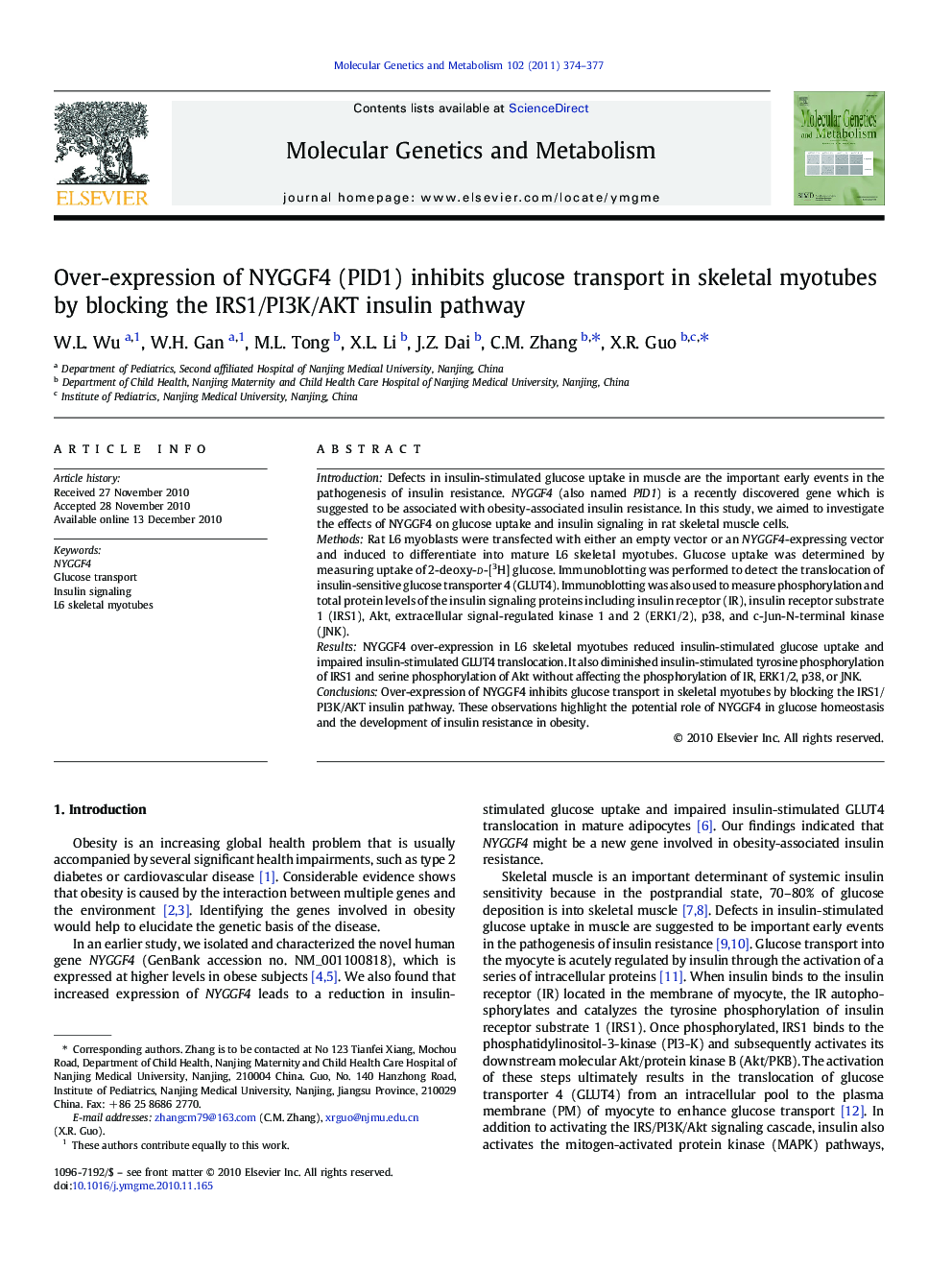| Article ID | Journal | Published Year | Pages | File Type |
|---|---|---|---|---|
| 1999434 | Molecular Genetics and Metabolism | 2011 | 4 Pages |
IntroductionDefects in insulin-stimulated glucose uptake in muscle are the important early events in the pathogenesis of insulin resistance. NYGGF4 (also named PID1) is a recently discovered gene which is suggested to be associated with obesity-associated insulin resistance. In this study, we aimed to investigate the effects of NYGGF4 on glucose uptake and insulin signaling in rat skeletal muscle cells.MethodsRat L6 myoblasts were transfected with either an empty vector or an NYGGF4-expressing vector and induced to differentiate into mature L6 skeletal myotubes. Glucose uptake was determined by measuring uptake of 2-deoxy-d-[3H] glucose. Immunoblotting was performed to detect the translocation of insulin-sensitive glucose transporter 4 (GLUT4). Immunoblotting was also used to measure phosphorylation and total protein levels of the insulin signaling proteins including insulin receptor (IR), insulin receptor substrate 1 (IRS1), Akt, extracellular signal-regulated kinase 1 and 2 (ERK1/2), p38, and c-Jun-N-terminal kinase (JNK).ResultsNYGGF4 over-expression in L6 skeletal myotubes reduced insulin-stimulated glucose uptake and impaired insulin-stimulated GLUT4 translocation. It also diminished insulin-stimulated tyrosine phosphorylation of IRS1 and serine phosphorylation of Akt without affecting the phosphorylation of IR, ERK1/2, p38, or JNK.ConclusionsOver-expression of NYGGF4 inhibits glucose transport in skeletal myotubes by blocking the IRS1/PI3K/AKT insulin pathway. These observations highlight the potential role of NYGGF4 in glucose homeostasis and the development of insulin resistance in obesity.
